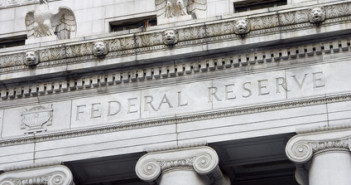By Alex Edwards at UKForex, an international money transfer service.
Cable looked fragile at the start of this week, falling to a low of 1.6220 as investors positioned themselves for a possible Fed taper and as UK CPI printed softer than market expectations. CPI in November rose 2.1% from a year earlier, lower than forecasts for a 2.2% rise and closer to the Bank of England’s target of 2%. The Governor of the Bank of England spoke shortly after the release and gave a robust defence of the central bank’s forward guidance, going on to say that the UK’s return to growth meant it was prudent not to increase the bank’s quantitative easing programme. GBP/USD rose back through 1.63 as a result.
The big news of the week though was the Federal Reserve announcing a tapering of its QE programme, taking its monthly asset purchases from $85bn to $75bn. Fed Chairman Ben Bernanke acknowledged during the accompanying press conference that the US jobs market and economic conditions had improved enough to warrant a small slowdown of purchases. He did also say, however, that the bank would be leaving the Fed Funds rate low well after the unemployment rate declines below the 6.5% threshold, especially if projected inflation continues to run below 2%. Cable immediately jumped to its week high of 1.6480 following the announcement, but as the dust settled, it fell back under 1.64 to finish the week at 1.6340.
The euro has been less resilient to USD strength this week. It fell from 1.3790 to 1.3670 after the taper announcement and drifted further to finish the week at 1.3640 following news that S&P, the ratings agency, had cut the long-term rating of the European Union from AAA to AA+, citing rising tensions surrounding budget negotiations. The single currency was also sold against the pound, this cross selling playing a part in supporting cable above 1.63. GBP/EUR came close to breaking 1.20 by the end of the week.
As for the AUD/USD and NZD/USD, both currency pairs lost ground following the Fed announcement. In other news, the RBA Minutes delivered few surprises, the central bank stating that the Australian dollar remained uncomfortably high and that “a lower level would likely be needed to achieve balanced growth in the economy”. NZD was well-supported on the crosses, including against the AUD as NZ GDP printed better than expected.
Next week will obviously be a quiet one and the few market players about will no doubt have their feet up during the festive holidays. The only data worth noting is US Durable Goods Orders released on Tuesday.
Analysis: Sweet Dectaper is still a taper – USD has the upper hand
